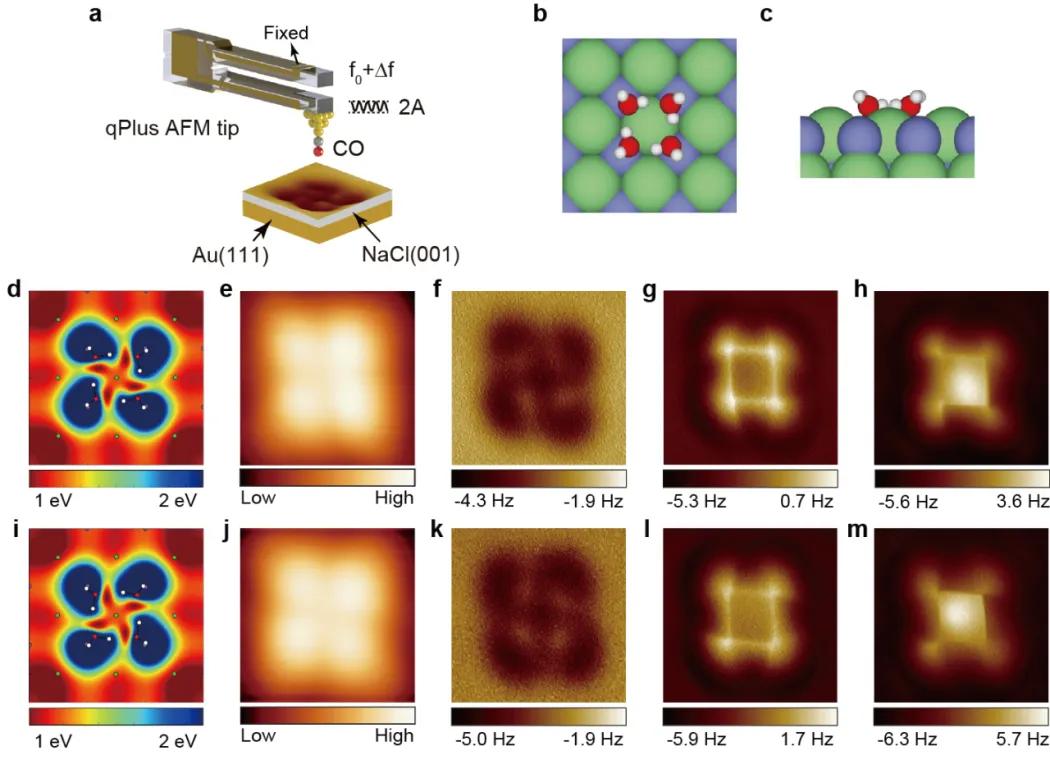Scientists from Institute of Physics of the Czech Academy of Sciences and Palacky University in Olomouc, in collaboration with colleagues from the Chinese Academy of Sciences and the Beijing University, have made significant progress in imaging water molecules. Scientists have developed a new method to achieve submolecular resolution of weakly bound water clusters on solid surfaces, including their chiral orientation or metastable configurations. The work published in Nature Communications [1] significantly advances the current possibilities of imaging weakly bound water nanostructures using Atomic Force Microscopy (AFM).
A wide range of physical, chemical and technological processes, such as water corrosion resulting from electrochemical reactions or transport of molecules in cells, takes place at the water and solids interface. Studying water behavior is one of the major challenges of contemporary science and is addressed across different disciplines. A deeper understanding of these processes is, however, currently limited by our ability to accurately determine the local structure of clusters consisting of weakly bound water molecules at the interface with the solid, see Figure 1 showing a cluster of water formed by 4 water molecules with two possible chiral configurations.
One of the techniques used to study the interface between water and solids is scanning probe microscopy. In scanning probe microscopy, the molecules are displayed using a tip with an atomically sharp apex. However, the disadvantage is that the conditional interaction of the probe with weakly bound water molecules inevitably leads to disturbing their fragile water structure and undesirable measurement distortion. These undesirable effects significantly limit the exact determination of their structure at the atomic level. Alternatives are non-invasive spectroscopic methods such as optical spectroscopy, neutron scattering, and nuclear magnetic resonance imaging. However, these spectroscopic methods do not allow local determination of the structure of small water clusters on solid surfaces.
Czech and Chinese scientists have developed a new method for the submolecular resolution of water-based clusters deposited on salt using weak multipole electrostatic forces between water molecules and a specially modified tip of a microscope ending with a single molecule of carbon monoxide, see Figure 1. This method allows imaging of metastable structures with their minimal structural disturbance as well as the chiral orientation of water clusters.
This work opens the way for studying the internal structure and dynamics of ice or water on the surface of solids and studying electrochemical processes, ion hydration and biological water with atomic precision.
Reference
[1] J. Peng, J. Guo, P. Hapala, D. Cao, R. Ma, B. Cheng, L. Xu, M. Ondráček, P. Jelínek, E. Wang, Y. Jiang, Weakly perturbative imaging of interfacial water with submolecular resolution by atomic force microscopy, Nature Communication 9 (2018) 122(1) - 122(7).
